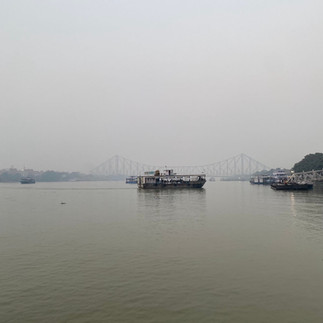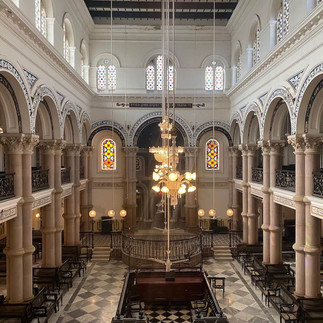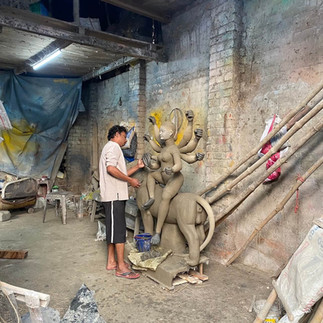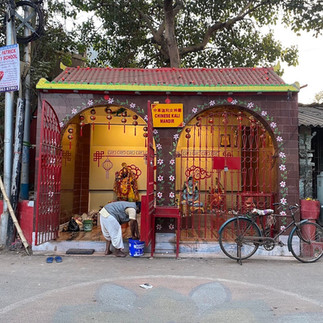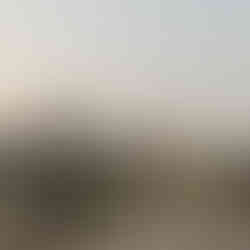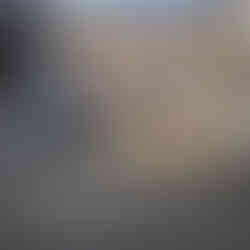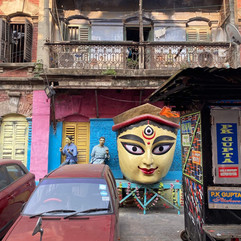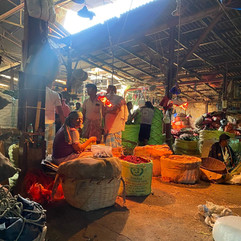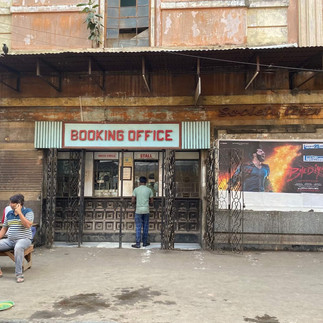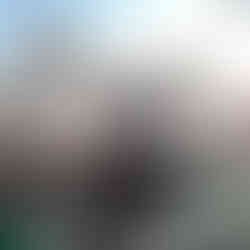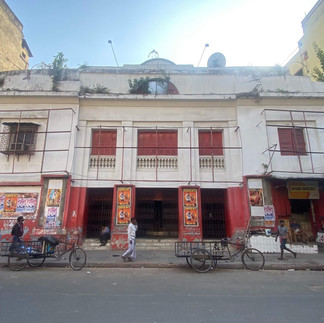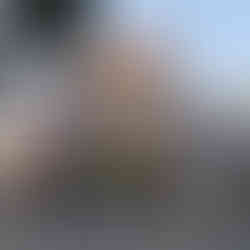Calcutta City Guide
- Sam Mendelsohn
- Apr 28, 2024
- 32 min read
Updated: Feb 10
Check out the other relevant Calcutta and Bengal sections, including my Calcutta food guide, recommended reading and film recommendations for Calcutta/Bengal, Bengali music recommendations, and my getaway to Shantiniketan and a Rajbari stay in a village a few hours from the city.
Check out my wife's Instagram stories for more photos.
Calcutta (or Kolkata, but I use Calcutta more because that’s what it sounds like in my head) is awesome. It is obviously a must visit for anyone who loves big Indian cities, has a serious interest in modern Indian history (by modern I mean EIC and onward, in India we're dealing with some hardcore time horizons), and a love of Bengali culture. This and Mumbai are the only two Indian cities that qualify as grand metropolises in my book, and the only two big cities in India that feel cohesive rather than like a series of disjointed colonies. This makes Calcutta a better walking city than you'd expect, despite its obvious challenges.
I spent a month there in December 2022 and still feel I have much to explore, and I look back on that time with an emotional longing for it. It is hard to explain as much of it is intangible, but I would say what I love is the massive scale where every single part is interesting, the way everything feels old, and my connection with many great cultural products that came out of the city (see the separate posts I have on books, films, and music). There's a grandeur to the city that I find awe inspiring. And Bengali food is some of the world's finest.
It’s not for everyone (even as a seasoned India hand, I was still like “This traffic is crazy! Why is everyone honking?!”), and I feel a short trip might just be chaotic and unsatisfying (though I feel that way about short trips to big cities in general), but a longer stay is highly rewarding. I would recommend moving there! I look forward to returning for another long stay one day and am eager to come for Durga Puja.
Random thoughts and facts:
Weather in December was very pleasant. Neither hot nor cold, and we would walk all day and not break a sweat. Pollution was terrible, though. I’m told it’s worse in the winter than the rest of the year. I still recommend a winter visit anyway, go with a good mask and you’ll be okay.
The architecture in Calcutta is generally more Neo-Classical than what you see in Mumbai and Chennai, which have greater Indo-Saracenic splendors. That makes the grandest British buildings in Calcutta more boring to me than what you see in the other cities. But the median historical building is as good as if not better than what you get in the other cities, with a good mix of Indian and imported styles including some art deco gems. There are tons of mansions and palaces. A good contender for the best architecture in India overall, though I think I’d put Mumbai ahead of it (my metrics being some combination of quality, quantity, and diversity).
Calcutta was of course historically important as the capital of the EIC and later the British Raj, but that didn't loom that large for me while visiting, despite reading a lot about it when I was there. It doesn't feel like an imperial capital the way New Delhi does, and it really feels like a multi-ethnic commercial city, like the other Presidencies (this makes sense given their origins). To me it seemed less diverse than Mumbai and probably more diverse than Chennai, which is matched by the language demographics I looked at (Wikipedia says it was 61% Bengali speaking in 2011).
Despite its diversity, its Bengali-ness shines strong. Is it wrong to call Calcutta the Bengali capital? Some may dispute that (though probably not in India) as Dhaka may have more Bengali speakers today, but in terms of cultural impact Calcutta clearly seems stronger, and it was the capital of undivided Bengal after all. Either way, it's one of the two major Bengali cities, and Wikipedia tells me "Bengalis are the third-largest ethnic group in the world, after the Han Chinese and Arabs," with Bengali being the seventh most spoken language in the world with 273 million speakers. It seems like it's worth learning more about Bengali culture! And Calcutta was arguably India's cultural powerhouse in the 19th and 20th centuries, and possibly earlier as well, as we'll soon discover. Nobody could make that claim for the 21st century though.
According to a late 18th century publisher, Calcutta at the time had more books published than in “Vienna, Copenhagen, Petersburg, Madrid, Venice, Turin, Naples, or Rome.” (Taken from the great book Calcutta: A Cultural and Literary History by Krishna Dutta, see my books page for more info.)
India’s only Nobel prize winner for literature (Tagore, obviously) is from Calcutta, and the only economics Nobel winners (Sen and Banerjee, obviously) are Bengali and spent key years of their lives in Calcutta.
67% of students in West Bengal are in the humanities, the third highest in India (behind just the neighboring states Bihar and Jharkand). 14.6% of students are in technical courses, one of the lowest rates in the country (again topped only by neighboring states). Bengal has the lowest rate of students studying commerce (6.3%). All of this is according to the great India in Pixels Twitter account. Also from the same source, Bengal has the highest rate of beggars by far (noticeable while visiting). Interestingly, Bengal is in the middle when it comes to the percentage of its population that is poor (21.4%), and though Maharashtra’s rate is lower (14.9%), Kolkata’s poverty rate is 2.8% compared to Mumbai’s 3.6%. I don't know if this is meaningful or just differences in measurements.
According to the 1951 census, only 33% of Calcutta’s residents were born there. Of the immigrants, 12% came from neighboring villages, 27% from other Indian states, and 27% from East Bengal.
I don’t recall being anywhere else in India, or anywhere in the world for that matter, where the “local heroes” are so predominantly displayed. Across India there’s a ton of Gandhi and to a lesser extent Ambedkar statues, Maharashtra has Shivaji statues, etc, but it’s on another level with Subhas Chandra Bose and Rabindranath Tagore in Calcutta. I kind of embarrassingly didn’t realize how big of a figure Tagore is. I knew he was a local literary titan, but thought he was mostly beloved by old people and intellectuals rather than at the top of the cultural pantheon, like Shakespeare plus Elvis plus MGR, somehow bigger than them all. You’ll see things refer to him as “Poet,” i.e. “Poet was born in…” and “Poet’s contribution to Bengali literature…”, which I find unfortunate because reducing him to a mere poet really sells him short considering all of his other artistic and intellectual endeavors (I don’t like poetry though so I’m biased). I also knew nothing about Tagore's family outside of the other artists. I found it kind of touching to know that despite the Tagore family being one of the most prominent business families in India in its time, that's largely been forgotten while the artistic legacy that lives on. (Should I find it touching though? In general business people probably don't get enough respect from society while artists get too much respect, and this might be truer in Calcutta than anywhere else.) On a different note, did you know that Poet endorsed products like Bournvita and Godrej soap? I've redacted most of what I wrote about Bose but I found it funny that government museums promote conspiracy theories about him still being alive.
In general I’m a non-violence kind of guy, and Calcutta really celebrates its violent freedom fighters in a way I found to be a bit discomfiting. The museums do not give an impression that Gandhi was the father of the nation. Step-uncle, at best. It's especially interesting because there is the long running stereotype of Bengalis being artistic and effete (see the important sociological text Rocky Aur Rani Kii Prem Kahaani). What explains the greater promotion of violent resistance here? A more violent independence movement than other parts of the country? A legacy of communism?
More than most places in India, I felt Bengalis have very distinctive facial features. It certainly varies from person to person and I couldn’t identify everyone as Bengali, but at least on a broad level I have a sense of what a Bengali person looks like. I got a much better sense of this with men than with women, though. No wonder there are so many conspiracy theories about Bose still being alive, I had a conversation on the bus with a guy who looked just like him! The geneticist Razib Khan has written about Bengali genetics and the shared genetics traits with East and Southeast Asians but I can't make heads or tails of this stuff.
I was wondering what the Bengal cat is. From my humble research assistant Chatworth G. P. Tenenbaum: "The Bengal cat breed derived its name from the Asian leopard cat's scientific name, Prionailurus bengalensis. The Bengal cat is a hybrid breed that was created by breeding domestic cats with the wild Asian leopard cat. This hybridization aimed to combine the wild appearance of the leopard cat with the domestic temperament of a house cat. In the early 1960s, a California-based breeder named Jean Mill began experimenting with breeding domestic cats and Asian leopard cats, with the goal of creating a cat with a distinctive spotted or marbled coat pattern." From browsing Wikipedia, it appears there are around as many restrictions on Bengal cats in the U.S. as there are on pitbulls? Also, there is a long-haired version of the Bengal cat called the Cashmere Bengal. They’re just throwing together random Indian names now. I think the Cincinnati Bengals are the only major American sports team named (kinda) after an Indian state, I say we push for more of them. The Oklahoma Biharis. The Tennessee Tamils. So many possibilities!
In case you didn’t know, “Oh ! Calcutta ! Calcutta !” is a (nsfw, contains nudity) painting by Clovis Trouille, with the name being a play on the French "O quel cul t'as! " which translates to "Oh, what an arse you have!" The title “Oh! Calcutta!” was later used for a theatrical production that is known for a series of sex related comedy sketches performed in the nude (one of them written by John Lennon). Now Oh! Calcutta is a small chain of upscale Bengali restaurants across India. It’s the only dirty pun I know of that became an Indian restaurant name, but do share if you’re aware of any others.
How many big cities in the world still have hand-pulled rickshaws?! They were introduced to the city by the Chinese, by the way. I never took one, at first it felt kinda disgusted by the concept, but then I regretted my disgust and felt bad that I didn't support them. I like walking though, and if it's too long to walk I'd just take an automobile, but perhaps if I'm there in the rainy season I'd do it.
What cities other than Calcutta and Detroit have so greatly declined in prominence the past 70 years? I'm sure there are more that I'm not aware of or am blanking on.
This may just be because I’m not that well traveled, but other than Istanbul I’ve never been anywhere where I’ve felt as many people smoke cigarettes as they do in Calcutta. No idea how accurate these numbers are but this puts it at 19% and the second highest rate in India (I’m so naive and sheltered that I am consistently shocked by numbers like these). There were times when it appeared that everybody on the street I was on was smoking. I would occasionally see groups of young women smoking and think to myself “Where are the judgmental aunties to scold them?” and then I’d look and see a group of sari clad aunties also smoking. Oh well. Better than the open heroin use I saw in Lisbon, I guess. Don’t smoke, kids! While we’re at it, don’t do heroin either.
Where to stay: If you are going for a short strip focused on sightseeing and if you can afford it, I'd probably recommend the Oberoi which is really in the heart of the city and pretty central even though the neighborhood is very crowded, or the boutique heritage hotel the Calcutta Bungalow which is in a quaint, quiet North Calcutta neighborhood. If I could stay anywhere on another long stay, I would stay in one of the nice southern suburbs like around Vivekananda Park, which is far from the action but is a nice, quiet, green space to live with a lot of good restaurants and cafes, and it's also not far from the underground metro. Like most Indian cities, the Airbnb scene is quite bad in Calcutta. I stayed in a crappy but affordable place near Quest Mall. The location wasn't ideal but was decently central as far as a massive city like Calcutta goes.
Sightseeing Guide
It’s hard to give recommendations for things to do/see in Calcutta as specific places stand out less than the city as a whole. It’s worth walking through every lane of the historic parts of North Calcuttta, so how do I narrow it down? The most iconic monuments could and should be skipped in favor of wandering semi-aimlessly, which is true of many cities but possibly truer of Calcutta than any other big city I’ve been to. I spent countless hours just walking through the old neighborhoods of the city, sometimes walking until I was basically ready to collapse (ready to collapse also describes the condition of many of the grandest buildings I saw, come see them while they still exist!). We consistently clocked in over 20k steps over the weekends. I recommend this and think it is the right way to experience Calcutta, though I realize most people won’t have the luxury of time or the luxury of the nice winter weather, without which these walks would have been far less pleasant. Still, I’ll recommend some highlights.
Plan your bathroom breaks and pitstops in advance in North Calcutta (though men can and do pee everywhere, I’ve never been anywhere with so much public urination). Around Park Street and in the southern parts of the city there are a plethora of nice cafes, but as you get further north they are few and far between. Knowing these spots will also come in handy in the hot months when you need an AC break. There’s a very conveniently located CCD near the Sovarbazar Sutanuti metro station, as well as one on Bentinck Street (near the Great Eastern hotel, where you can also go to use the restroom and relax), note that the CCD near the high court does not have a bathroom! I also recommend the Jiabharali T-Cafe (off Vivekenanda road, not far from my favorite sweet shop Ghosh and Co and a nice neighborhood to walk in).
First off, I highly recommend a walking tour. We did two with Immersive Trails and they were excellent, really bringing the history of the city to life and full of great information (the ones I did were themed around Chinatown and WW2). On future visits I would make doing another one of their tours a priority, I'd rank them among the very best tours I've done in India. Most cities in India do not have good walking tours available on a regular basis, so this is a treat, don’t miss out! (I also heard good things about Calcutta Walks and walked by one in progress that seemed good, but they were too expensive for me.) Also, Immersive Trails has an app where you can do inexpensive self guided tours, this is definitely worth checking out though I haven’t had a chance to do one yet. The website is worth exploring with its number of blog posts on the city's history, and I just saw there is a podcast as well. We did another walk with a small company (that I don't feel the need to name) that we found on Facebook and it wasn’t very good in terms of the itinerary planning, the guide, the quality of the information provided, etc, and yet it was still fun and took me places I never would have gone otherwise. Ultimately, it’s just an endlessly fascinating city to explore!
Also, taking the tram through one of the scenic routes seems like one of the best things to do in Calcutta, but I never did it. I almost got on the tram a few times, but I either just missed it or it was booked out for a special tourist group tour run. There were times I waited at tram stops for 15 minutes and had no luck. Locals in the area told us that there are no fixed times, sometimes they run and sometimes they don’t. It seems very inconvenient for people who would actually rely on it for transportation! Either way, the system is pretty horrible. When we almost got on the tram that was reserved for a group tour, there was a crowd of a dozen or so locals waiting for the tram, and to get to it we walked as a mob through traffic and stood in front of the tram, which is in the middle of the road but with no platform to wait on, and then the tram thankfully didn’t run us over and stopped, but then when we learned we couldn’t get on we had to walk through the traffic again. What a mess!
Thankfully the metro is pretty good for getting around, though it is underground for much of the route so you miss your chance to see anything out the window. I recommend mostly going with cabs on a short trip for that purpose, but try to take the main line of the metro at least once, it’s fun and most of the parts I took are from the 80s and 90s so it has a grungy old school feel compared to the modern ones in other cities, but it is still nice enough that you won’t mind taking it (and at least whenever I went it wasn't insanely crowded), and it’s very conveniently located for sightseeing purposes. Also, it’s great to hear the station announcements on the metro, announcing the same stations with and without a Bengali accent. “Next station, Esplanade… Neksht shtashion, Eshplonode.” Writing it out, it sounds so ridiculous that I’m doubting how accurate my memory is, but I swear this happened.
Also, I must return for Durga Puja to go pandal hopping.
As for the highlights, I’ll put these in order of some importance, but I highly recommend it all, and I’ll also try to recommend relevant things nearby every place so you can plan out your outings.
College Street - A must, as Calcutta as it gets. Tons of book stalls (it would be fun to shop at them but it was too crowded to be enjoyable when I was there), book publishers, India Coffee House (a must visit just to experience the place, unfortunately everyone smokes but go with an N95 or at least go to look around), and as the name indicates there are colleges, some in nice buildings, but that hardly seems to be the point here. There’s a lot of good food around here too, famous century old places like cabin restaurants (I didn’t go but there’s the famous Dilkush and Basanta cabins) and pice hotels (see Mahal in the food section, there’s also Swadhin Bharat Hindu Hotel), plus Paramount Cold Drinks and Putirams. Check out the Presidency Boarding House, Sharadindu Bandyopadhyay once lived there.
Kumartoli / Sovabazaar- Conveniently located by the Sovabazar metro station. The potter’s neighborhood, Kumartoli, is a must see! They’re known for their Durga Puja creations, but the area is active year round making things for different festivals (I was there in late December when it was packed with Saraswatis in the making). It should be great whenever you visit, and it was interesting to learn that they make idols for other countries and that they make statues of mere mortals like Gandhi as well as anatomical figures for medical classes. We went in the late afternoon so we could take a sunset walk going south along the water, I recommend this, it’s a nice area to walk (we walked down to Nimtala Ghat and had litti chokha, which I briefly mention later). Also, there are a handful of nice things to see in the vicinity of Sovabazar, it’s definitely worth checking out everything on this list from Sahapedia: https://drive.google.com/file/d/1fgIjFHrysrpxTDOe4eNYqO13cjPZ-nHy/view The highlights for me are Sovabazar Rajbari (we were able to enter and see the courtyard, but we may have just gotten lucky, the mansion is historically significant, see here) and the Bata Kristo Paul chemist building (apparently it was the bestselling chemist in the world at one time(?!) and Bata Kristo Paul was the most famous person in the neighborhood, more info here, I regret not going inside and buying their homemade malaria cure Edward’s Tonic, aka “battis bemari ka dawai (a cure for thirty-five ailments)”). There’s a CCD nearby which has probably the nicest washroom in the area. Notable food in the area includes the very famous rossagulla shop Chittaranjan Mistanna Bhandar (often considered to be the best, I’m not a rossagulla fan so have no opinion, I liked their milky pudding dish called madhuporko and wish I tried their sandesh), the famous cabin joint Allen Kitchen (unfortunately nothing is vegetarian but it seems like the best cabin restaurant, they give you the option of paying extra to get things fried in ghee, every place should do this) and another famous cabin called Mitra which was always closed when we were there. Also, if you preorder you can pick up from The Whole Hog Deli in the neighborhood (I write about them later in the food section), though they also deliver.
Hatun Bazaar - Hatun bazaar is a highlight. It’s a bit dirty and run down, but there are countless small sweet shops in the area where you see them making sandesh fresh by hand along with custom ordered sweets in elaborate shapes. There’s a famous sweet shop on this lane called Makhan Lal Das & Sons, and I liked it but I got sandesh from a random place on the same lane called Dutta (not on google maps) which I thought was sensational. You’ll also see many shops selling unsweetened khoya, which is naturally sweet from the milk, and I enjoyed this more than most of the sweets in general. I won’t judge you if you find this area too dirty to eat anything at. While you’re here, walk down Prasanna Kumar Tagore St., it is chock full of old mansions. Don’t miss Tagore Castle (a different branch of the family, though also be sure to see Jorasanko Thakurbari not far from here). More info on the neighborhood here.
Mansions - In general, mansion spotting is one of the most fun activities of Calcutta. The City of Palaces moniker did not disappoint. There are grand mansions all over, often dilapidated, just waiting for you to gawk at them and imagine their lost worlds. If you have a group, a fun activity would be to split up and choose different neighborhoods to walk through for an hour and compete over who can photograph the most mansions. This is a good family vacation activity that you should do. Mansions! An easy way to find them in a given neighborhood is to type “rajbari” or “bari” into google maps, but many are off the map and not all things labeled rajbari on the map even exist. Another good method is just to type in “historical landmark.” But I recommend just walking randomly. Main roads and small lanes. Some of my favorite mansions included Tagore castle and a few others on the same Prasanna Kumar Tagore St. mentioned above near Hatun Bazaar. Another one that stands out in my memory is the Raja Subodh Chandra Basu Mallik Palace, which has been taken over by trees. There are great mansions in the southern parts of the city, but those are more British and less ridiculous and fun. You can rarely go into any of these (some you can peek into the courtyards, though), but seeing them from the outside is often splendorous enough. You can actually go into Jorasanko Rajbari (the Tagore family estate), whether or not the museum is interesting to you depends on your interest in the Tagore family, but either way you can just walk in and see the courtyard, which is cool, and it is enhanced by the knowledge that the Tagores staged plays there. I also mentioned Sovabazar Rajbari earlier. The highlight of a mansion you can visit is definitely the Marble Palace, but I missed it because it was closed for a few years after Covid. It has since reopened, and I believe you can just walk in at the gate, while before you had to get a ticket I believe one day before at the tourist office near BBD Bagh, though apparently bribing the security guards also worked. I would read recent Google reviews before visiting to see what the situation is. Either way you get a nice view from the outside.
[2025 edit: I visited the marble palace on a very brief trip to the city! You just walk in, no confusing ticket process required. No photos allowed. It was fun. Not an essential experience, but it was great to go inside one of these mansions and see how it may have looked a century ago. The interiors are ridiculous, with an art and sculpture collection that is impressive but also over the top and silly. That's part of the fun, though. My favorite part was the courtyard.] It’s worth spending some time seeing photos of the interiors of these mansions, there are nice expensive coffee table books on the subject, keep an eye out for them at the book stores, but you can also just google search. I’m not sure if it qualifies as a mansion, but you can stay at the very northern Calcutta Bungalow, which I walked into and it was very beautiful. It’s interesting to see from the outside how half of the building was restored and half wasn’t. There are a few other mansions in the city to stay in but none looked as nice, and though there are many rajbaris outside of the city to stay in (I stayed in one and would love to stay in more), the ones in the city are in a way more interesting to me, I like the blend of palatial and urban.
Esplanade / New Market - I’m lumping a pretty large area into this. I’m not sure the exact boundaries of Esplanade, but this was one of my favorite areas to walk around it. Note that it’s very busy, but it’s more pleasant to walk around here than many parts further north. Less pleasant but more interesting than Park Street to the south. New Market, the old covered market hall, is a must visit (in my food section I write about Nahoum’s, bandel cheese, and other New Market delicacies, and see also what I wrote on Nizam’s nearby). There’s also a ton of great architecture. There's the old Grand Hotel (now the Oberoi) and there’s also the small, charming Elgin Fairlawn heritage hotel not far from here. Several old cinemas are clustered around here, including the Elite (my favorite which I'm very sad to report has been torn down), the Metro (still active and well restored, if a bit too new looking now), the Globe cinema (originally an opera house, now just a shopping center but the facade is intact), and the New Empire(also now just a shopping center). Some of the best architecture is seen from Chowringee road on the flyover while heading north, don’t miss that! There are lots of good places to eat around here, even if you want something upscale there’s Aaheli, and the original branch of Kasturi isn’t far. To the north of here is the Metropolitan Building, once Calcutta’s grandest upscale department store, and the Statesman building a few blocks up is really cool (once home to the iconic newspaper which is still being published, and the building is being turned into a mall).
BBD Bagh + Surroundings (North and West of Esplanade) - I say walk here from Esplanade. BBD Bagh or Dalhousie Square is the central downtown area, relatively nice for walking, lots of great historic buildings (Writer’s Building, General Post Office, Royal Insurance Building, and the RBI building is cool lit up at night, but also there are many nice buildings just going down different lanes), lots of good street food (Dacres Lane is one of Calcutta’s iconic street food lanes, I liked the veg stew with toast from Chitto Babur Dokan, not one of the most delicious things in Calcutta but a fun mix of British and Indian food cultures, I also enjoyed the malai toast at Kona Dukan behind the Writer’s Building). You only get an okay view of the Raj Bhavan from the gate, worth seeing but not a must. I liked walking near the high court area, I always like the high court areas and it’s a good place to get jhalmuri and ghoogni, but the architecture of the court isn’t as good as Mumbai or Chennai. Still, fun and interesting. Don’t miss the Esplanade Mansion building on the corner near Dacres Lane. The Lalit Great Eastern hotel (the oldest hotel still standing in Calcutta, but it doesn’t have much old world charm left) is a good place to use the bathroom, or a CCD nearby (note that the CCD near the court doesn’t have a bathroom).
Bow Barracks - And the surrounding neighborhoods. The barracks was built during WW1 and later became a housing colony for Anglo Indians. Charming neighborhood, we met a nice, chatty old Anglo Indian guy which seems like a normal thing to happen there. Great to visit at Christmas time, and they had a Christmas fair going on for a few evenings. There’s a Parsi colony across the street and a few Zoroastrian temples in the neighborhood as well. The main roads around this area have a lot of great architecture and nice old shops. Check out the Mercantile Building. The Broadway Hotel has a popular old world bar that I think I read was popular with American troops in WW2 but now I can’t find source for that. The Chandni Chowk area has a lot of great architecture.
Barabazar - The craziest part of the city, but very much worth visiting. It seemed the most multicultural, both historically and in the present day. The synagogues are all clustered here (I definitely recommend the Maghen David Synagogue, it’s very beautiful and interesting to see, and there’s another on the same property and one more down the street, though depending on what is happening in the world they may or may not allow non-Jews in any of them), there’s also the Armenian Church, a nice cathedral, the Nakhoda Masjid (the biggest mosque in the city), many nice looking Jain temples (I tried going into two but they had just closed for afternoon naps), and in general many Jain and Punjabi areas in the market. Tons of great architecture and street food, you just gotta walk around and see stuff (I recommend the malai roll from Yadav Milk Supply, the dried malai from Banshi Maharaj Dhudwale, and the kachori sabzi from Kanhaiya).
Park Street - The entertainment street, and one of the most popular places for tourists. Has its charms and nice buildings, and its more laid back and upscale than the places mentioned above. I didn’t eat at any of the old heritage eateries here, none seemed that special for food, but they’re cute. Better than Park Street itself are the lanes around it. Russell Street is great. The whole area is fairly nice for walking. I like Vardaan market nearby for street food, the kulfi guy (who sells seasonal whole fruit kulfis, i.e. orange kulfi served inside of a cut up orange peel) and fruit vendor with interesting fruits (including a rose scented fruit that I had never had before!) were my favorites.
South Park Street Cemetary - Excellent, beautiful cemetery with extravagant tombs and lots of interesting stories! Read this guide while you’re there. Highly recommended!
South Calcutta - In general, the north of the city is the most interesting, but also kind of crazy, while many parts in the south are more relaxed, more gentrified, but also still historic and charming. There are lots of nice areas in the south to walk in. The area around Netaji Bhawan is nice (near Kewpie’s, one of my favorite restaurants), Bishop Lefroy road is really nice (Satyajit Ray lived in the big fancy building on that street, I think now owned by Tata), just in general that entire area is pretty and quiet and has lots of nice old buildings. I liked the area further south near Maddox Square Park, there was a nice old Indira Cinema and a lot of nice buildings. I unfortunately didn’t spend much time in Alipore, but it seems nice (near the zoo, library, Taj hotel, etc) and has a lot of historical buildings. I saw some amazing buildings while driving through. I spent a lot of time in the area around Vivekananda Park, there are many nice cafes which makes it a good area to work from and it is pretty to walk around in, a charming upper middle class neighborhood that balances modern and traditional well. I never went but I hear the Sabyasachi store is great and worth visiting even if you don’t care about this stuff. My favorite Bengali restaurant, Hotel Tarun Niketan, is near the Kalighat metro, and there are many famous chaatwalas on Lake Road, I had from Dilip da’s Puchka Centre and would love to go back for more. The upscale Sienna Store is one of city's best restaurants doing a sort of modern Bengali food. Ballygunge was also nice to walk around in, tons of great houses, and many art galleries (which I sadly didn’t get to go to) as well as the original branch of 6 Ballygunge Place. The Birla Mandir is very nice, great at sunset. Jamini Roy’s house is going to be a museum soon (perhaps by the time you read this!).
Temples - The one religious structure I highly recommend for everyone is the Parshwanath Jain temple in Maniktala, which is only a short drive from other points of interest. Beautiful and ornate in a fun, funky way that only Jain temples can be, and it’s also peaceful and free of touts and irritating crowds. Also very beautiful and unique are the Dakshineshwar Kali temple and the Belur Math temple, but we spent half a day visiting the two of them and I can’t recommend that for anyone who is only there on a short visit unless you have some special interest in them. The most famous temple in the city is Kalighat, but I’m not sure I recommend a visit for most people. The neighborhood is just very crowded and chaotic and there are tons of touts, and the temple itself isn’t very noteworthy architecturally from any angle I saw it at. There are of course countless more temples, those are the most significant in Calcutta, though.
Chinatowns - There are two Chinatowns, the old Chinatown in North Calcutta and the newer Tangra in the east. I did a terrific tour of the old Chinatown, but honestly I wouldn’t recommend visiting either without a tour (unless you have a lot of time in the city, but even then try to do a tour). There’s just not much left to see, and without hearing the stories or being taken into buildings you otherwise wouldn’t have access to you won’t get much out of it. I'm glad I got to go though. Tangra has a very cool cafe called 108.
Victoria Memorial - Obviously a beautiful building, but on a short trip it’s not worth going inside. Better to just walk through the gardens, or see it from the gate if you’re crunched for time, but don't think this is a necessity. The inside has a great but very small art gallery with paintings by famous British artists (I recognized Thomas and William Daniell) showcasing India and specifically Calcutta in a few cases, this is worth seeing if you have time, but it’s very crowded inside and much of the museum is on Bose, independence, freedom fighters, etc, and it’s not really worth seeing all of that. There’s a lot of text and few original artifacts. I’ve heard about much more art in the galleries but I think the new exhibits have replaced them. Read the short section about the memorial in Krishna Dutta’s Calcutta book, it’s very interesting and made me appreciate it more.
Howrah Bridge - I saw it by boat (and went under it), crossed it by car, and crossed it by foot, awesome every time, all are worth doing. But should you prioritize these activities? Probably not.
Museums - The highlight is definitely the Indian museum, which is great. If you’re only in Calcutta a short time, though, you should skip it in favor of just spending time in the city, unless you have a particular interest in archaeological findings. That said, the Bharhut Gallery is amazing, the sculpture gallery is great, there’s a nice exhibit of paintings upstairs, and an excellent but oddly placed gallery of assorted artifacts and structures of old houses upstairs past the textile gallery hidden at the end of the preserved reptile section for some reason. I believe much of the museum is air conditioned, so I rank this higher if you’re there during summer. A good thing to do when the sun is beating down. Another museum I really liked is the house of the scientist AJC Bose, which I randomly walked by and decided to go into. I don’t have a big interest in science and wasn’t familiar with Bose’s achievements, but it’s a beautifully preserved old house with some great artwork and antiques, including ceiling art by Nandalal Bose, and the tour features some interesting stories. The hours here are very limited, I don’t recommend going without calling ahead. Two other house museums are the Subhash Chandra Bose house and the Tagore house. The actual museums are for fans only, but I definitely recommend at least seeing the grounds of the Tagore house. It’s one of the only grand mansions open to the public, and you don’t need a ticket to see the courtyard, which is the best part. It’s worth buying a ticket and seeing the bedrooms and art galleries, though, but if you’re only in Calcutta a short while I wouldn’t recommend going through the whole museum, which is large and has a lot of information on Tagore’s travels. You can read a book about him if you're curious to know more, same with Bose. The police museum is not really worth visiting but has some interesting displays of weapons (the highlight are guns that local gangs gave up during Gandhi’s famous hunger strike) and there’s a hilarious and bizarre display of items in cases that the Calcutta police has solved. Unfortunately no pictures were allowed, but the museum has things like a brass pipe on display with text that said something like “This pipe was used by so-and-so, a housewife aged 58, who murdered her husband such and such, aged 63, and attempted to flee with his money. The Calcutta police were tipped off by her neighbor and caught her.” One of the objects was a bed and description saying that this is where a man raped and murdered a young girl. It really needs to be seen to be believed. Why in the world would they display these? Highly recommended? There were a few other small museums I saw but I don't feel they are noteworthy enough to recommend.
And I feel like I barely scratched the surface and didn’t even name some of my favorite places! As I mentioned, just walk randomly. Some of my favorite parts to walk were in the northern part of the city to the east of the metro and tram lines. These are quieter than many of the places I mentioned and there’s not much to see, but sometimes you stumble upon something great. The area around the Raja Ram Mohan Roy Memorial Museum (which I only saw from the outside) was nice to walk in. Walking from there all the way to Shyambazar up north, zigzagging through small lanes, sounds like a great morning to me. Bowbazar was great, especially on a Saturday morning even though it is packed. I’ve read that Koley market is the city’s biggest wholesale produce market, that was very cool to see. I never made it to the flower market near Howrah bridge. Nimtala ghat was kind of interesting to see, though I mostly just enjoyed the walk along the water and the litti chokha you get there (the best I’ve ever had, smaller sized with lots of ghee and an interesting green chutney). I wish I could have walked more of the Strand Road. On the next trip will somebody invite me to one of the clubs?
I also did a government run “Kolkata Heritage River Cruise” sunset boat ride, which was supposed to have a guide pointing out monuments and telling historical stories but there was no such guide, just loud Hindi music. I still really enjoyed it, it’s great to see the city from the water, and it was cheap so whatever. A nicer boat tour would be better. A lot of cities have boat rides that aren't really worth doing but I think the ones in Calcutta are. Immersive Trails occasionally does boat tours so look into that.
Cinema
I mentioned some above, but I want to have a separate section on the beautiful historic single screen cinemas of Calcutta. I didn’t see a movie at any but I visited at least a dozen and they were great to see. I did go to some Bengali movies (with subtitles) at a multiplex as well as at the Nandan cinema, which I'll write about below. I recommend seeing some Bengali movies while you're in town! I'll end with some great links and excerpts about Roger Ebert's visit to a film festival in Calcutta in 1999. If you want recommendations for Bengali films and other films set in the city and region, see my separate section on the subject, which includes some great old documentary footage of the city.
Historic Single Screens
The best cluster of old cinemas is around Esplanade, though many are now gone. My favorite was the Elite, which I'm sad to report has been demolished since I visited. Another favorite is Society. The Metro is also a highlight, designed by Thomas Lamb and once run by MGM just like the Metro cinema in Mumbai. It is now a modern Inox, and though I feel it's a bit too new looking I appreciate the restoration work and that it's still going strong. Though they are no longer active, I believe the facades are all still there on the Globe (once the opera house), New Empire, and Lighthouse cinemas. There’s another cluster up north with the Star, the Minar, and a few others on that road that have shut but are still standing. The Minerva not far from there is now a respectable theatre establishment. Down south the standouts are the Menoka, the Priya, the Indira, and the Bijoli, which all seemed like nice establishments where respectable family audiences see movies, unlike some of the ones I checked out up north and most of the ones I've seen in Mumbai. I would like to see a movie at these next time. I'm not sure if these have subtitles though.
Seeing Bengali Movies in Calcutta
If you’re in Calcutta, I would recommend at least considering going to the theater to see a Bengali movie. I wish I could say this was a highly recommended activity, but unfortunately the chances of seeing something really good aren't especially high. Check out some trailers and see if anything looks decent.
I believe the films mostly have subtitles. The guy at Nandan cinema told me that everything they show has subtitles. The people at INOX South City Mall told me that nothing has subtitles, but everything had subtitles. I've seen some people say that Bengali movies usually have subtitles all over India, but I don't know if it's true.
I didn't have any issues with a bad audience in Kolkata, which is really unusual in India. Maybe I just got lucky. What also stood out was how, at the multiplex I visited, the staff ran in as soon as the lights came on for the interval and went through the aisles shouting "pani puri, sev puri...", but only for the Bengali movies I saw, which always had a mixed age audience with many older audience members. This didn't happen for the one Hindi movie I saw at the same theater which had a mostly young to middle aged audience.
Nandan is the state run film center in the same complex as some other cultural spaces for art, music, and theatre. It’s fun and worth checking out even if you aren't going to see a movie, and it's well located for visiting, centrally located and right by a metro stop. They exclusively screen Bengali movies and the tickets are super cheap.
I went on a weekday afternoon and it was packed! I don't know if that's typical or not. You can buy tickets in person or on bookmyshow. The projection was alright, not great but better than most single screens I’ve been to and decently watchable for most contemporary Bengali movies. The seating arrangement was odd, the lower section is too far below the screen, and I usually don't like being in the balcony section which I find to be too far away (this was their main screen, they also have a smaller screen). Also, when I went they didn’t give an interval even though the movie had an interval. This was upsetting. I had to pee. This was for a relatively short movie, around two hours, so maybe for longer movies they give them.
Overall I'd recommend going here, it was a fun experience despite my quibbles. I mean, if you're reading this you're probably the kind of person excited by the idea of visiting West Bengal's government run film center, so you should go. It's nice that they are dedicated to showing contemporary Bengali films, but I really wish they'd regularly show some classics too since the current state of Bengali cinema isn't very inspiring.
The only other place I saw a movie was at INOX South City Mall, a typical upscale multiplex at the city's nicest mall. The laser screen was excellent, one of the best I’ve been to in India, better than Inox’s laser screens in Mumbai for some reason. The other auditorium I saw (screen 2) was decent, not great but above average. Acceptable for most Bengali movies, at least. My biggest issue was that the light from the exit sign hit the screen.
Another theater I wanted to go to is Nazrul Tirtha, another cultural center with a cinema. It's in the newer eastern part of the city which didn't seem that interesting from what I saw.
Kolkata International Film Festival
Nandan holds the Kolkata International Film Festival in the winter which has great programming. I thought I'd rather spend my time exploring the city than attending a film fest, but I decided to sign up for the hell of it since it might be a good experience to check out the fest. It was, kind of.
The festival is free, but to sign up I had to fill out paperwork and stand in line to submit it in person. When I got to the front of the line the grumpy young volunteer asked if I had my form from the previous year. I told them I haven't attended before, and they said they are mostly only accepting applications from people who have previously attended, but I can hand-write a letter to the festival president requesting them to accept my application. I didn't think this would work, and I didn't care that much about attending the fest to bother, but I thought I might as well finish the application to give my story some conclusion. Later in the week I wrote the letter and came back to submit it.
I never heard back, nor did my wife who also submitted. We told this story to some friends who live in in the city and they offered to make some phone calls to get us into the festival. We said we didn't care that much, it's just a funny story. They told us that this is very typical of Calcutta. Anyway it was, in fact, a good experience. Communism may have fallen in Bengal in 2011, but its legacy lives on!
Speaking of film festivals, I saw lots of posters around town for an anti-fascist film festival. That felt very Calcutta.
Ebert In Calcutta
For Roger Ebert fans, I highly recommend reading his dispatches from the time he visited the Calcutta Film Festival in the 1990s. Very fun! He mentions going to Nandan and Lighthouse.
There are lots of gems in here, but my favorite was the discovery that Baby’s Day Out, a failure in the U.S., was a massive hit in Calcutta. "It ran and ran and ran…Seventeen weeks at least, filling every seat in our largest auditorium, 1400 seats. Let me tell you, business would be better if every film were that good." I learned this was the case all over South Asia. This was never on my list of movies to watch, but now it is! I’m curious to know what other films were much bigger hits in India than in the U.S. (another I can think of is Mackenna's Gold).
Also, anybody know what movie this is? I must watch it!
“Sanjay told me the selection of Indian films was not good this year because the official government film festival in New Delhi has kept many of the prints. Hannah and I went to a film he recommended, which was incredibly incompetent--not just bad, but incompetent. Left after a scene where a witness to an accident was grilled by a policeman who shook him violently by the shirt, after which the witness fainted and the policeman's assistant brought him around with smelling salts. "Do not tell anyone you have talked to us!" the policeman tells the suspect. "Our meeting must remain a complete secret!" Then the witness is delivered back to his home in a police car with the red light flashing on the roof, not a good way to keep the secret."

